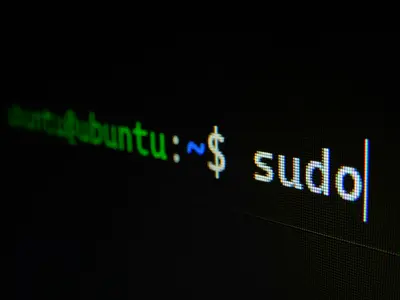🛡️ OWASP Top 10 Prevention Strategies on AlmaLinux: Complete Security Guide
Welcome to the essential world of web application security! 🔐 Today we’ll master the OWASP Top 10 - the most critical security risks facing web applications. Think of this as your security shield against the most dangerous cyber threats that could compromise your applications and data! 🌟
The OWASP (Open Web Application Security Project) Top 10 represents a powerful consensus about the most critical security risks. By learning these prevention strategies, you’re joining millions of security professionals who protect the digital world every day! 💪
🤔 Why is OWASP Top 10 Important?
The OWASP Top 10 is like having a roadmap to digital fortress-building! 🏰 Here’s why every developer and security professional needs to know this:
- 🎯 Prevent 90% of Attacks - These top 10 cover most real-world security incidents
- 💰 Save Millions in Damages - Prevent costly data breaches and downtime
- 🏅 Industry Standard - Required knowledge for security certifications
- 📈 Career Advancement - Essential skills for developers and security roles
- 🛡️ Protect Users - Keep customer data and privacy secure
- ⚖️ Legal Compliance - Meet GDPR, HIPAA, and other regulatory requirements
- 🚀 Build Trust - Users trust secure applications more
- 🌍 Global Recognition - OWASP standards are accepted worldwide
🎯 What You Need
Before we dive into security mastery, make sure you have:
✅ AlmaLinux system (physical or virtual machine)
✅ Root or sudo access for installing security tools
✅ Basic web development knowledge (HTML, HTTP, server concepts)
✅ A web application to secure (or we’ll create test examples)
✅ Text editor like nano or vim
✅ Internet connection for downloading tools and updates
✅ Apache or Nginx web server (we’ll help you set up)
✅ At least 2GB RAM for running security scanning tools
📝 Setting Up Security Testing Environment
Let’s create a secure testing environment to practice OWASP prevention! 🛠️
# Update your system first for latest security patches
sudo dnf update -y
# This ensures you have the latest security updates
# Install essential security tools
sudo dnf install -y nmap wireshark-cli tcpdump
# Network scanning and traffic analysis tools
# Install web server for testing
sudo dnf install -y httpd httpd-tools
# Apache web server for hosting test applications
# Install PHP for creating vulnerable test applications
sudo dnf install -y php php-cli php-mysqlnd
# PHP runtime for web application testing
# Install database for testing
sudo dnf install -y mariadb-server mariadb
# Database server for testing SQL injection prevention
# Start and enable services
sudo systemctl start httpd mariadb
sudo systemctl enable httpd mariadb
# Start web server and database for testing
# Install Python security tools
sudo dnf install -y python3-pip
pip3 install --user sqlmap dirb nikto
# Popular web application security testing toolsCreate a test directory structure:
# Create secure testing directory
sudo mkdir -p /var/www/html/security-test
sudo chown apache:apache /var/www/html/security-test
# This is where we'll place our test applications
# Create logs directory for security monitoring
sudo mkdir -p /var/log/security-tests
sudo chmod 755 /var/log/security-tests
# Directory for storing security test results🔧 OWASP Top 10 #1: Injection Prevention
Injection attacks are like digital poison! Let’s learn to prevent them completely. 💉
Understanding SQL Injection
# Create a vulnerable test script (DON'T use in production!)
sudo cat > /var/www/html/security-test/vulnerable.php << 'EOF'
<?php
// VULNERABLE CODE - DON'T USE IN PRODUCTION!
$user_input = $_GET['id'];
$query = "SELECT * FROM users WHERE id = " . $user_input;
echo "Query: " . $query;
// This code is vulnerable to SQL injection
?>
EOF
# This demonstrates what NOT to doSecure Prevention Method
# Create a secure version using prepared statements
sudo cat > /var/www/html/security-test/secure.php << 'EOF'
<?php
// SECURE CODE - Use this approach!
$pdo = new PDO("mysql:host=localhost;dbname=testdb", "user", "password");
// Use prepared statements with parameters
$stmt = $pdo->prepare("SELECT * FROM users WHERE id = ?");
$stmt->execute([$_GET['id']]);
$result = $stmt->fetch();
echo "Data retrieved securely!";
// This code prevents SQL injection completely
?>
EOF
# This shows the correct, secure approachInput Validation and Sanitization
# Create comprehensive input validation script
sudo cat > /var/www/html/security-test/validation.php << 'EOF'
<?php
function validateInput($input, $type) {
switch($type) {
case 'email':
return filter_var($input, FILTER_VALIDATE_EMAIL);
case 'int':
return filter_var($input, FILTER_VALIDATE_INT);
case 'url':
return filter_var($input, FILTER_VALIDATE_URL);
case 'string':
return htmlspecialchars($input, ENT_QUOTES, 'UTF-8');
default:
return false;
}
}
// Example usage
$email = validateInput($_POST['email'], 'email');
$user_id = validateInput($_POST['id'], 'int');
$comment = validateInput($_POST['comment'], 'string');
if ($email && $user_id && $comment) {
echo "All inputs are valid and safe!";
} else {
echo "Invalid input detected - access denied!";
}
?>
EOF
# This script validates and sanitizes all user input🌟 OWASP Top 10 #2: Broken Authentication Prevention
Authentication is your digital front door - let’s make it unbreakable! 🚪
Secure Password Handling
# Create secure password hashing script
sudo cat > /var/www/html/security-test/auth-secure.php << 'EOF'
<?php
// SECURE password handling
// Hash password securely
function hashPassword($password) {
return password_hash($password, PASSWORD_ARGON2ID, [
'memory_cost' => 65536, // 64 MB memory
'time_cost' => 4, // 4 iterations
'threads' => 3 // 3 threads
]);
}
// Verify password securely
function verifyPassword($password, $hash) {
return password_verify($password, $hash);
}
// Example usage
$password = "MySecurePassword123!";
$hash = hashPassword($password);
if (verifyPassword($password, $hash)) {
echo "Password verified successfully!";
} else {
echo "Invalid password!";
}
// Session security
session_start();
session_regenerate_id(true); // Prevent session fixation
$_SESSION['authenticated'] = true;
$_SESSION['last_activity'] = time();
// Set secure session cookie parameters
ini_set('session.cookie_secure', 1); // HTTPS only
ini_set('session.cookie_httponly', 1); // No JavaScript access
ini_set('session.cookie_samesite', 'Strict'); // CSRF protection
?>
EOF
# This script implements secure authentication practicesMulti-Factor Authentication Setup
# Install Google Authenticator for 2FA
sudo dnf install -y google-authenticator qrencode
# Tools for implementing two-factor authentication
# Create 2FA setup script
sudo cat > /var/www/html/security-test/setup-2fa.php << 'EOF'
<?php
// Simple 2FA implementation example
function generateSecretKey() {
$chars = 'ABCDEFGHIJKLMNOPQRSTUVWXYZ234567';
$secret = '';
for ($i = 0; $i < 16; $i++) {
$secret .= $chars[random_int(0, strlen($chars) - 1)];
}
return $secret;
}
function generateQRCode($user, $secret, $issuer = 'MyApp') {
$url = "otpauth://totp/{$user}?secret={$secret}&issuer={$issuer}";
return "https://api.qrserver.com/v1/create-qr-code/?size=200x200&data=" . urlencode($url);
}
// Example usage
$user = "[email protected]";
$secret = generateSecretKey();
$qr_url = generateQRCode($user, $secret);
echo "Secret Key: " . $secret . "<br>";
echo "<img src='{$qr_url}' alt='QR Code for 2FA setup'>";
?>
EOF
# This enables two-factor authentication for extra security✅ OWASP Top 10 #3: Sensitive Data Exposure Prevention
Your data is precious - let’s protect it like treasure! 💎
Data Encryption at Rest
# Set up disk encryption for sensitive data
sudo dnf install -y cryptsetup
# Tool for encrypting disk partitions
# Create encrypted storage for sensitive files
sudo fallocate -l 100M /var/secure-storage.img
# Creates a 100MB file for encrypted storage
sudo cryptsetup luksFormat /var/secure-storage.img
# Encrypts the storage file (you'll set a password)
# Mount encrypted storage
sudo cryptsetup open /var/secure-storage.img secure-data
sudo mkfs.ext4 /dev/mapper/secure-data
sudo mkdir -p /mnt/secure-data
sudo mount /dev/mapper/secure-data /mnt/secure-data
# Creates and mounts encrypted storage
# Example: Store sensitive configuration securely
sudo cat > /mnt/secure-data/database-config.conf << 'EOF'
[database]
host=localhost
username=secure_user
password=VerySecurePassword123!
database=production_db
ssl_mode=require
EOF
# Sensitive configuration stored in encrypted storageHTTPS and TLS Configuration
# Install SSL/TLS certificates
sudo dnf install -y certbot python3-certbot-apache
# Let's Encrypt SSL certificate tool
# Configure Apache for HTTPS
sudo cat > /etc/httpd/conf.d/ssl-security.conf << 'EOF'
# SSL Security Configuration
# Enable only secure SSL protocols
SSLProtocol -all +TLSv1.2 +TLSv1.3
# Use strong cipher suites
SSLCipherSuite ECDHE+AESGCM:ECDHE+CHACHA20:DHE+AESGCM:DHE+CHACHA20:!aNULL:!MD5:!DSS
# Security headers
Header always set Strict-Transport-Security "max-age=63072000; includeSubDomains; preload"
Header always set X-Content-Type-Options nosniff
Header always set X-Frame-Options DENY
Header always set X-XSS-Protection "1; mode=block"
# Hide server information
ServerTokens Prod
ServerSignature Off
EOF
# This configures Apache for maximum SSL/TLS security
# Restart Apache to apply SSL configuration
sudo systemctl restart httpd
# Applies the new security settingsDatabase Encryption
# Configure MariaDB with encryption
sudo cat >> /etc/my.cnf.d/mariadb-server.cnf << 'EOF'
[mysqld]
# Enable binary log encryption
encrypt_binlog = ON
# Enable temporary table encryption
encrypt_tmp_disk_tables = ON
# Enable temporary file encryption
encrypt_tmp_files = ON
# Connection encryption
require_secure_transport = ON
ssl_cert = /etc/ssl/certs/mysql-cert.pem
ssl_key = /etc/ssl/private/mysql-key.pem
EOF
# This enables database encryption for sensitive data
# Restart database to apply encryption
sudo systemctl restart mariadb
# Applies encryption settings🎮 Quick Examples
Let’s practice with real security scenarios! 🎯
Example 1: XSS Prevention (OWASP #4)
# Create XSS prevention script
sudo cat > /var/www/html/security-test/xss-prevention.php << 'EOF'
<?php
// Prevent Cross-Site Scripting (XSS) attacks
function sanitizeOutput($data) {
return htmlspecialchars($data, ENT_QUOTES, 'UTF-8');
}
function setSecurityHeaders() {
header("Content-Security-Policy: default-src 'self'; script-src 'self' 'unsafe-inline'; style-src 'self' 'unsafe-inline'");
header("X-XSS-Protection: 1; mode=block");
header("X-Content-Type-Options: nosniff");
}
// Example usage
setSecurityHeaders();
$user_comment = $_POST['comment'] ?? 'No comment';
$safe_comment = sanitizeOutput($user_comment);
echo "<div>User Comment: " . $safe_comment . "</div>";
// Content Security Policy example
echo '<script nonce="' . base64_encode(random_bytes(16)) . '">
console.log("This script is allowed by CSP");
</script>';
?>
EOF
# This prevents XSS attacks completelyExample 2: Broken Access Control Prevention (OWASP #5)
# Create access control system
sudo cat > /var/www/html/security-test/access-control.php << 'EOF'
<?php
session_start();
class AccessControl {
private $user_roles = [
'admin' => ['read', 'write', 'delete', 'admin'],
'editor' => ['read', 'write'],
'viewer' => ['read']
];
public function hasPermission($user_role, $action) {
return isset($this->user_roles[$user_role]) &&
in_array($action, $this->user_roles[$user_role]);
}
public function requirePermission($action) {
$user_role = $_SESSION['user_role'] ?? 'guest';
if (!$this->hasPermission($user_role, $action)) {
http_response_code(403);
die("Access Denied: Insufficient permissions");
}
}
}
// Example usage
$ac = new AccessControl();
// Check if user can delete files
$ac->requirePermission('delete');
echo "User has delete permission - action allowed!";
// Direct object reference protection
function getSecureFile($file_id) {
$user_id = $_SESSION['user_id'] ?? 0;
// Check if user owns this file
$pdo = new PDO("mysql:host=localhost;dbname=testdb", "user", "password");
$stmt = $pdo->prepare("SELECT * FROM files WHERE id = ? AND owner_id = ?");
$stmt->execute([$file_id, $user_id]);
return $stmt->fetch() ?: null;
}
?>
EOF
# This implements proper access controlExample 3: Security Misconfiguration Prevention (OWASP #6)
# Create security hardening script
sudo cat > /home/security-hardening.sh << 'EOF'
#!/bin/bash
# Security hardening script for AlmaLinux
echo "🛡️ Starting security hardening..."
# Remove unnecessary packages
sudo dnf remove -y telnet rsh ftp vsftpd
echo "✅ Removed insecure network services"
# Configure firewall
sudo firewall-cmd --permanent --remove-service=dhcpv6-client
sudo firewall-cmd --permanent --add-service=http
sudo firewall-cmd --permanent --add-service=https
sudo firewall-cmd --reload
echo "✅ Configured firewall rules"
# Secure SSH configuration
sudo cp /etc/ssh/sshd_config /etc/ssh/sshd_config.backup
sudo sed -i 's/#PermitRootLogin yes/PermitRootLogin no/' /etc/ssh/sshd_config
sudo sed -i 's/#PasswordAuthentication yes/PasswordAuthentication no/' /etc/ssh/sshd_config
sudo systemctl restart sshd
echo "✅ Hardened SSH configuration"
# Set file permissions
sudo chmod 644 /etc/passwd
sudo chmod 640 /etc/shadow
sudo chmod 755 /etc
echo "✅ Set secure file permissions"
# Configure automatic updates
sudo dnf install -y dnf-automatic
sudo systemctl enable --now dnf-automatic.timer
echo "✅ Enabled automatic security updates"
echo "🎉 Security hardening complete!"
EOF
# Make script executable and run it
chmod +x /home/security-hardening.sh
sudo /home/security-hardening.sh
# This hardens your AlmaLinux system automatically🚨 Fix Common Problems
Encountering security issues? Here are solutions to common problems:
Problem 1: SSL Certificate Issues
# Check SSL certificate status
sudo certbot certificates
# Shows all installed SSL certificates
# Renew expired certificates
sudo certbot renew --dry-run
# Tests certificate renewal process
# Fix certificate permissions
sudo chmod 644 /etc/letsencrypt/live/*/cert.pem
sudo chmod 600 /etc/letsencrypt/live/*/privkey.pem
# Sets correct permissions for SSL certificates
# Test SSL configuration
openssl s_client -connect localhost:443 -servername your-domain.com
# Tests SSL/TLS connectionProblem 2: Database Security Issues
# Secure MySQL/MariaDB installation
sudo mysql_secure_installation
# Runs interactive security setup
# Check database user permissions
sudo mysql -e "SELECT User, Host FROM mysql.user;"
# Shows all database users
# Remove unnecessary database users
sudo mysql -e "DROP USER 'test'@'localhost';"
sudo mysql -e "DROP DATABASE test;"
# Removes test accounts and databases
# Enable database firewall
sudo firewall-cmd --permanent --remove-service=mysql
sudo firewall-cmd --reload
# Blocks external database accessProblem 3: Web Server Security Issues
# Check Apache security modules
sudo httpd -M | grep security
# Shows loaded security modules
# Enable additional security modules
sudo dnf install -y mod_security mod_evasive
# Installs web application firewall
# Configure mod_security
sudo cat > /etc/httpd/conf.d/mod_security.conf << 'EOF'
LoadModule security2_module modules/mod_security2.so
SecRuleEngine On
SecDataDir /tmp
SecAuditLog /var/log/httpd/modsec_audit.log
EOF
sudo systemctl restart httpd
# Enables web application firewallProblem 4: Session Security Issues
# Create secure session configuration
sudo cat > /etc/httpd/conf.d/session-security.conf << 'EOF'
# PHP Session Security
php_value session.cookie_httponly 1
php_value session.cookie_secure 1
php_value session.cookie_samesite Strict
php_value session.gc_maxlifetime 3600
php_value session.regenerate_id 1
EOF
sudo systemctl restart httpd
# Applies secure session settingsProblem 5: File Upload Security Issues
# Create secure file upload handler
sudo cat > /var/www/html/security-test/secure-upload.php << 'EOF'
<?php
function secureFileUpload($file) {
// Validate file type
$allowed_types = ['jpg', 'jpeg', 'png', 'gif', 'pdf'];
$file_extension = strtolower(pathinfo($file['name'], PATHINFO_EXTENSION));
if (!in_array($file_extension, $allowed_types)) {
return "File type not allowed";
}
// Validate file size (5MB max)
if ($file['size'] > 5 * 1024 * 1024) {
return "File too large";
}
// Generate secure filename
$secure_filename = bin2hex(random_bytes(16)) . '.' . $file_extension;
$upload_path = '/var/www/uploads/' . $secure_filename;
// Move file to secure location
if (move_uploaded_file($file['tmp_name'], $upload_path)) {
return "File uploaded successfully: " . $secure_filename;
} else {
return "Upload failed";
}
}
// Example usage
if (isset($_FILES['upload'])) {
echo secureFileUpload($_FILES['upload']);
}
?>
EOF
# This handles file uploads securely📋 Simple Commands Summary
Here’s your quick security reference guide! 📖
| Command | Purpose | Example |
|---|---|---|
sudo firewall-cmd --list-all | Check firewall status | View current firewall rules |
sudo systemctl status httpd | Check web server status | Verify server is running |
sudo tail -f /var/log/httpd/access_log | Monitor web access | Real-time access monitoring |
nmap -sS localhost | Scan open ports | Security port scanning |
sudo mysql_secure_installation | Secure database | Interactive database hardening |
openssl x509 -in cert.pem -text | Check SSL certificate | View certificate details |
sudo dnf update --security | Install security updates | Update only security patches |
sudo auditctl -l | View audit rules | Check system auditing |
💡 Tips for Success
Follow these best practices for bulletproof web security! 🌟
🔒 Defense in Depth
- Never rely on a single security measure
- Implement multiple layers of protection
- Assume attackers will find some vulnerabilities
🚀 Keep Everything Updated
- Install security patches immediately
- Monitor security advisories regularly
- Update frameworks and libraries frequently
📊 Monitor and Log Everything
- Enable comprehensive logging
- Set up real-time security alerts
- Review logs regularly for suspicious activity
🎯 Principle of Least Privilege
- Give users minimum necessary permissions
- Regularly review and revoke unused access
- Use role-based access control
🛡️ Security by Design
- Consider security from the beginning
- Code reviews should include security checks
- Use security frameworks and libraries
🔄 Regular Security Testing
- Perform penetration testing quarterly
- Use automated vulnerability scanners
- Test backup and recovery procedures
🏆 What You Learned
Congratulations! You’ve mastered the OWASP Top 10 prevention strategies! 🎉 Here’s what you can now do:
✅ Prevent injection attacks with input validation and prepared statements
✅ Implement secure authentication with proper password hashing and 2FA
✅ Protect sensitive data with encryption and secure transmission
✅ Prevent XSS attacks with output encoding and CSP headers
✅ Control access properly with role-based permissions and authorization
✅ Harden system configuration against security misconfigurations
✅ Secure file uploads and prevent malicious file execution
✅ Monitor and detect security threats in real-time
🎯 Why This Matters
Web application security isn’t just about preventing attacks - it’s about building trust, protecting users, and creating a safer digital world for everyone! 🌟
In today’s threat landscape, security breaches can destroy businesses overnight. By mastering the OWASP Top 10, you’re not just protecting code - you’re protecting people’s data, privacy, and livelihoods. These skills make you invaluable to any organization and essential for building applications that users can trust.
Security is everyone’s responsibility, and by learning these prevention strategies, you’re joining a global community of security-minded professionals who make the internet safer for billions of users every day! 🚀
Remember: security is a journey, not a destination. Stay curious, keep learning, and always think like an attacker to defend like a champion. The skills you’ve learned today will protect applications, users, and organizations for years to come! ⭐
Great job on completing this comprehensive security guide! You’re now equipped to build and maintain secure applications that stand strong against even the most sophisticated attacks! 🙌




